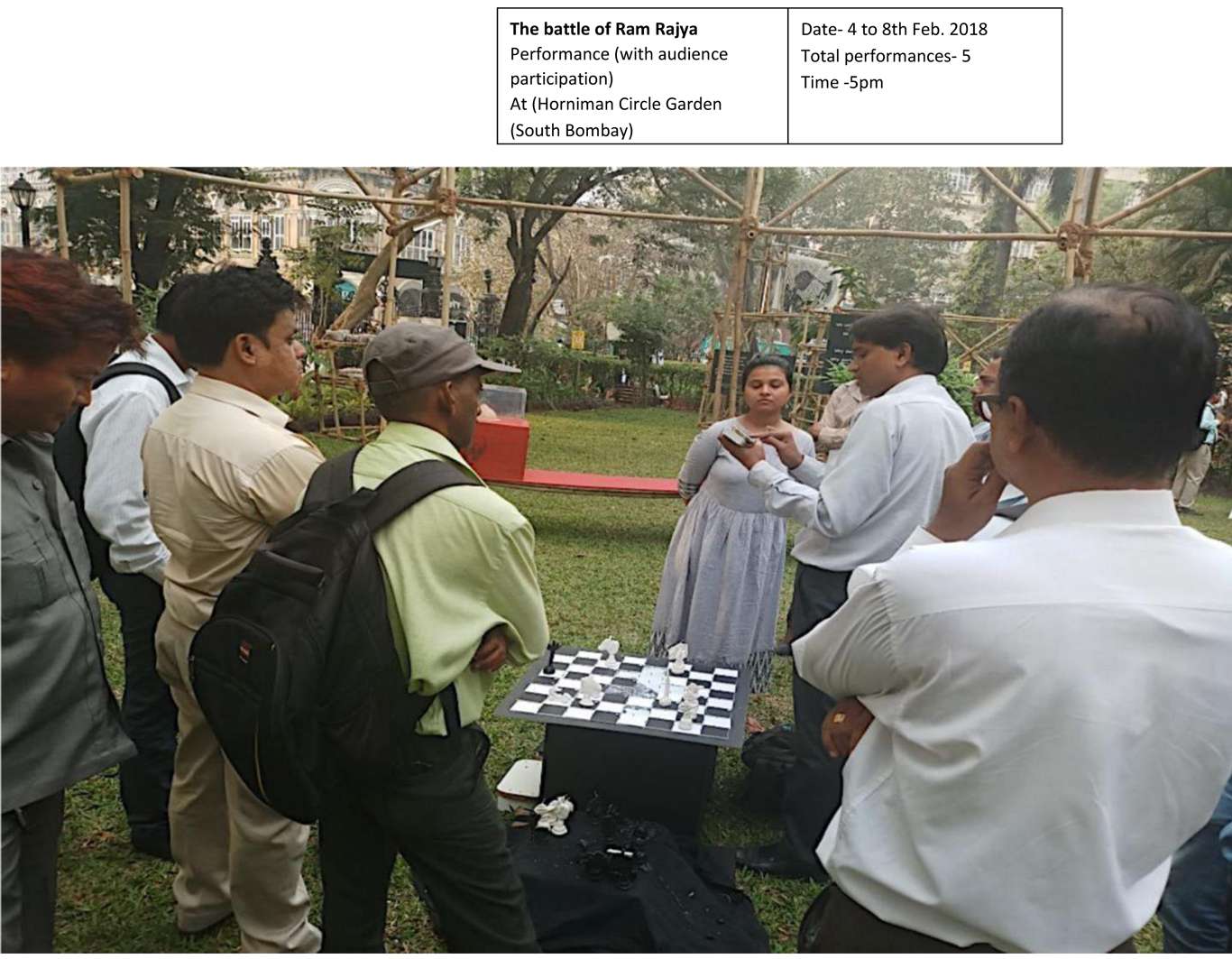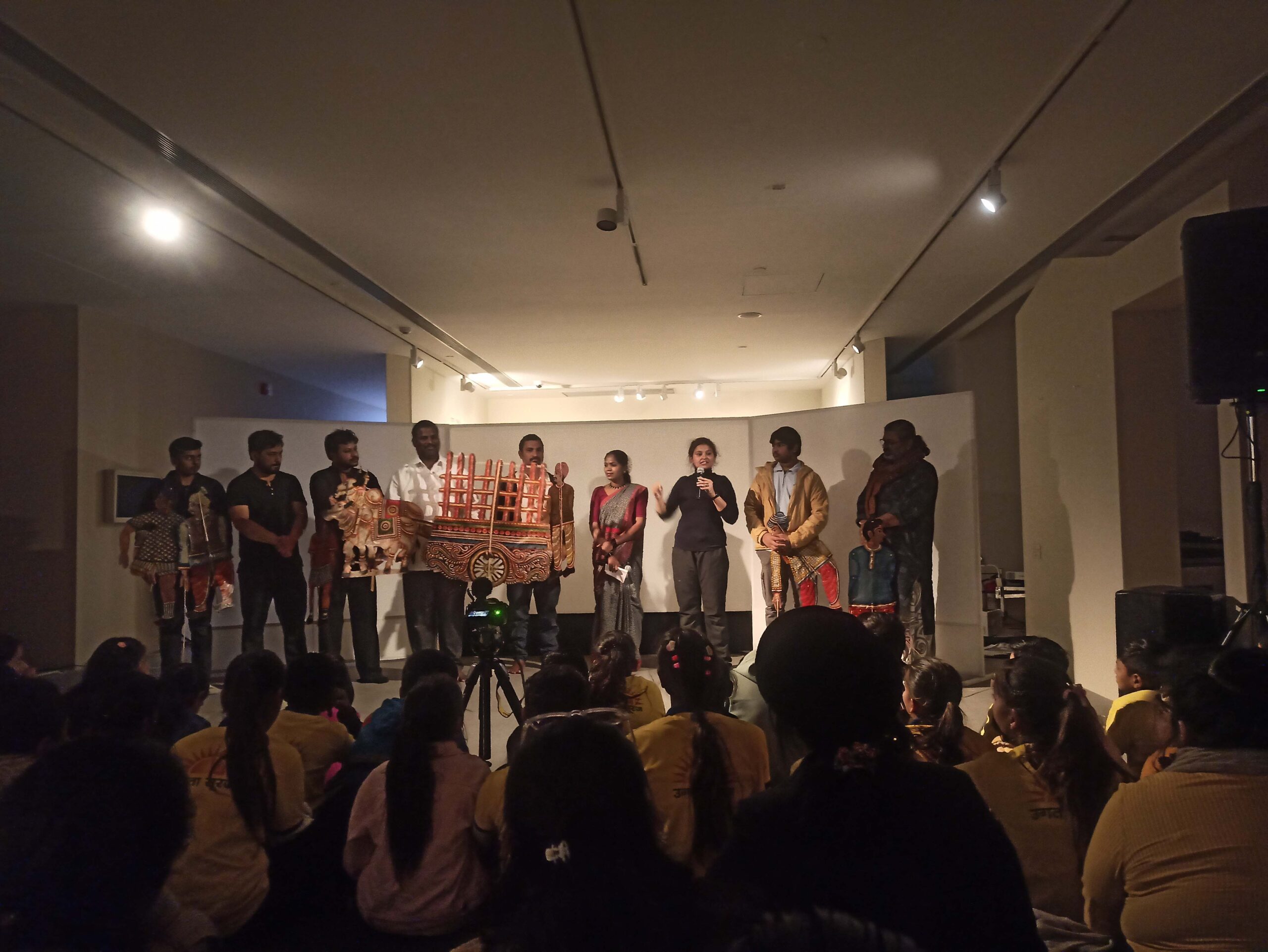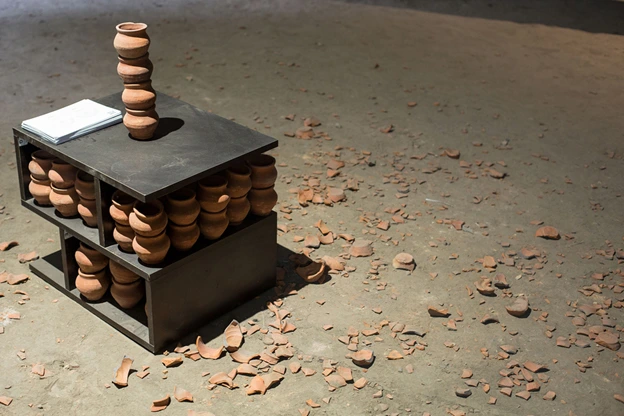The Battle of Ram Rajya – The Game of Chess
This is a ongoing performance piece that invites the audience to play a game. This game is adapted from ‘Chaturanga’ which is an ancient game from the Indian sub-continent, a common ancestor of ‘chess’ It was known as ‘Shatranj’ in Sassanid Persia and as ‘Chess’ was brought to late-medieval Europe.
Chaturanga developed in the Gupta Empire, India around the 6th century AD. Charturanga meant “four-limbed”, which referred to the four parts of the army:
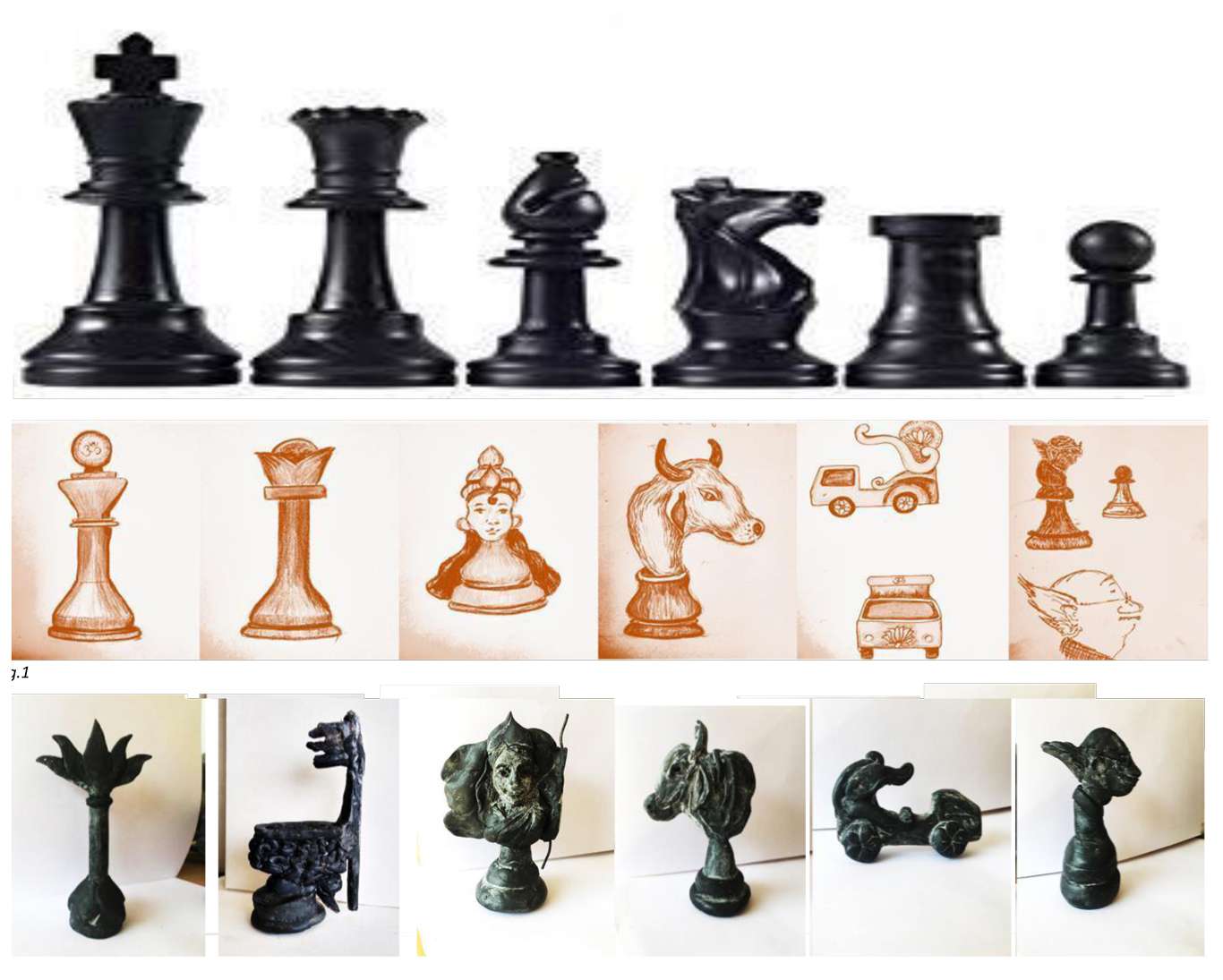
In this I have developed on the chessmen and changed the power dynamics within them and replaced the positions of power with the contemporary sociopolitical milieu. Along with the changed chessmen some rules of playing the game have also been tweaked.
Replacing Vazir (वज़ीर), Bishop(गज) , Chariot (रथ), Horse (अश्व), Sainik/ foot-soldier or infantry (पढ़त ़ ़़ी ).These were molded in wax(candles).
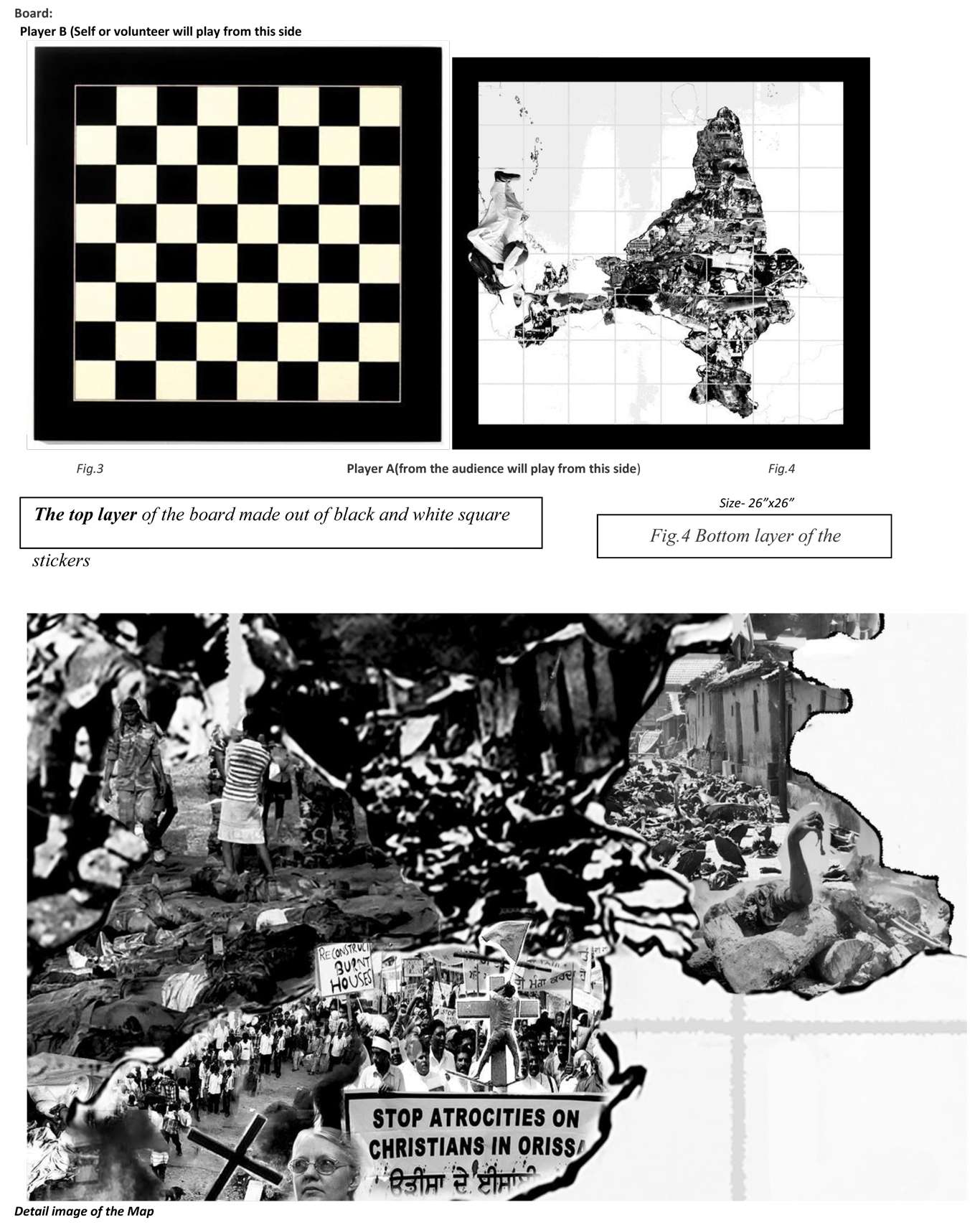
Detail image of the Map
Fig.3 is the top layer of the board which is made out of black and white square stickers. In the square, when the chessman is defeated, the winning player has to remove the sticker. Fig.4 is the bottom layer consisting of a map which shows various events of communal violence from different geographical locations in India The events are represented by images. This generates a kind of curiosity among the spectators to open other parts of the board. There are multiple sets of the chessmen.
The book of Data
A book of historical data has been compiled about each event that has occurred in India from colonial to contemporary times that has been based along religion, caste and such sectarian divisions. Each square on the chess board is numbered with corresponding data printed on the respective page number of the book. When a player loses a chess piece they will peal the square (sticker) to reveal the image and the number on it, the performer and participant will read the data from the book provided.
During the performance I or the volunteer (Player B) invite people (Player A) to play a game of chess. If a player does not want to play till the end it is fine. S/ he can leave and another person can take her/is place and the same game will proceed. Player B could have a camera focused on the chess board so more people can see the game in progress as a projection. The size of the game is 26” X 26”. The player who loses will then proceed to burn the chess piece. There will be an envelope for the winner which has a message.
Concept:-
Inspired by Vijay Tendulkar’s literary works of social significance, I have coined the term ‘Truth Drug’. I feel his characters make the viewers realize/ face what is hidden within them. His works include violent and cruel characters but these characters suffer silently because of their own nature, the viewer starts feeling guilty.
Political power has the self-procured authority to divide the people in the name of religion and create conflicts among the people which lead them to fight and kill each other. To me this is almost like cock, bull or dog fights except that the animals here are the common people. Politicians give us a key for violence through their provocative speeches which incite people to take law in their own hands. When we look back in the history we can see the same violence in different avatars; violence is always a reaction of previous violence, a modified continuation.
In this game both the kings have similar signs on them as they want to achieve the same goal. This violence is happening by the performers but at the end, they will be got to know through the baksheesh (envelope) that they are not actual winners of this game they were someone who has been killed.
The links will be mentioned in the envelope of the Images which I have taken from the certain events’. Those Images of map will be placed only from Player B’s perspective and for player A’s view will be unusual. So, every time when sticker will be removed Player B has to read the event.
The title of the game is ‘The Battle of Ram-Rajya’. The term Ram Rajya (Rule of Rama) often used to define democratic-righteous rule during the Indian independence struggle by M. K. Gandhi. The similar titled movie has been made in 1943 before the independence.
I am attaching herewith documentation of ongoing project. Group 2020 invited me to participate in this show. I have started this project- performance with public participation, interactions followed by discussions and readings.
